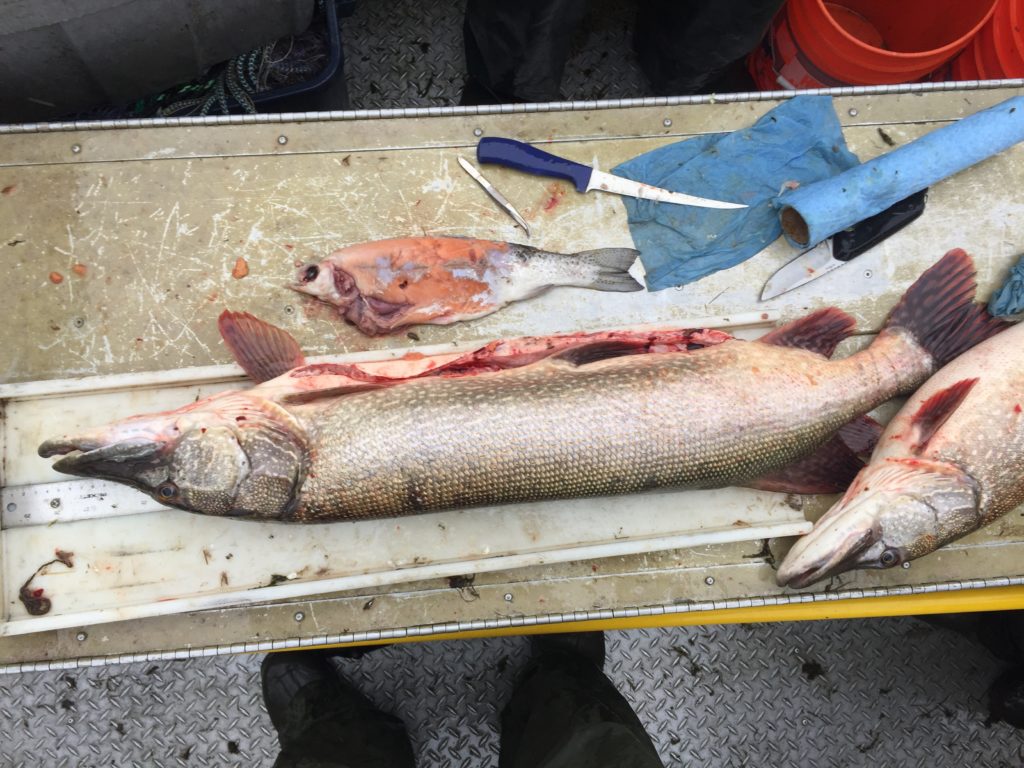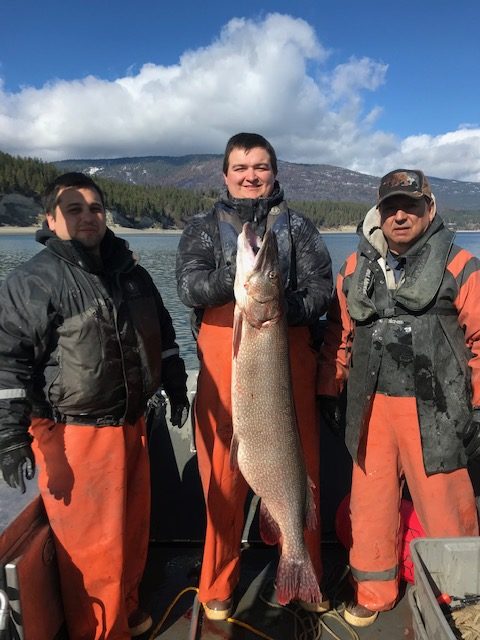Rivers are complex systems, and conservation efforts can be as complex as river systems themselves. Collaborative efforts involving multiple stakeholders have the best chance to be successful. Here are two regional conservation efforts where multiple stakeholders are working together to improve our waterways.
Invasive Predators
Invasive northern pike have been making inroads into the Columbia River from illegal introductions in Montana and Idaho. These large carnivorous creatures will eat anything they can get into their mouths, such as ducks, bass, to other pike. Northern pike have the potential to impact steelhead and salmon populations—especially if they make their way to spawning grounds past Grand Coulee Dam and into the Okanagan. Pike are already feeding heavily on native redband trout and burbot and are affecting hatchery rainbow trout populations.

A collaborative effort has been under way for several years to suppress the population of these invasive pike within the Columbia River system. The co-managers of Lake Roosevelt—the Spokane Tribe, Colville Confederated Tribes, and Washington Department of Fish and Wildlife (WDFW)—are working with agencies both up and down stream, such as Canada’s first nations and Ministry of Environment; the Kalispel and Coeur d’Alene tribes; and Douglas, Grant and Chelan Public Utility Districts.
According to Holly McLellan, a Colville Fish Biologist, northern pike are gill netted in spring when they spawn in shallow waters. The co-managers of Lake Roosevelt held weeklong “All Hands On” suppression effort in April using 450 nets and 10 boats with a goal of catching over 1,000 spawning pike.
The Colville Confederated Tribes also has a reward for anglers catching pike, $10 per pike head. The tribe has established several drop off stations and paid out $4,500 to anglers. McLellan states, “We need their help to keep the pike population in check.”
Since 2015 the Colville Tribe, Spokane Tribe, and WDFW have removed over 8,761 pike.

Streamside Restoration
Hangman Creek is the most polluted waterway in the state. The waterway suffers from low oxygen, high nutrients, high temperature, and too much sediment suspended in the water. Just walk down to the confluence of Hangman and the Spokane River right after a rainstorm and notice the brown, cloudy Hangman versus the greenish-clear Spokane.
The primary cause of these issues is the lack of connectivity of the creek to its floodplain. An intact floodplain with complex habitat of riparian trees, down woody debris, and over bank flooding traps sediments, slows floodwaters, and reduces pollutant entering the waterway. Currently there are several collaborative projects addressing these water quality issues.
In the Idaho headwaters the Coeur d’Alene Tribe is restoring tributary creeks with a goal of enhancing native redband trout habitat. They are removing creeks from straight ditches along railroad track and allowing them to run through historic meanders. By adding wood debris, planting trees to produce shade, and curves to the creeks flow, water will slow down, settle out sediments and make more complex habitat features, all benefitting redband trout.
In the lower basin of the Hangman, many organizations have been working to increase the amount of historic cottonwood and willow forests that once lined the creek. Organizations such as the Spokane Conservation District, The Lands Council, and Department of Ecology frequently have volunteer plantings. They are also working with local landowners to fence off portions of the creek to remove cows, which trample vegetation, erode the stream banks, and can add pollutants.
The Spokane Falls chapter of Trout Unlimited and the Spokane Riverkeeper have started a citizen science initiative to monitor water clarity. Participants sample the water clarity as well as take photo points to document the state of our river.
The Spokane River Keeper recently won a court case that stated the Department of Ecology and Environmental Protection Agency needs to do more to lower pollutants in the Hangman Creek drainage. This includes a full assessment of riparian vegetation, greater enforcement of current laws, cattle removal, and strengthening collaborative efforts.Waters in our river basins are a shared resource; anything done up stream will eventually make its way down stream. Collaboration from all user groups, mangers, and the public will make these waters healthier for all users and just more fun to play in.













